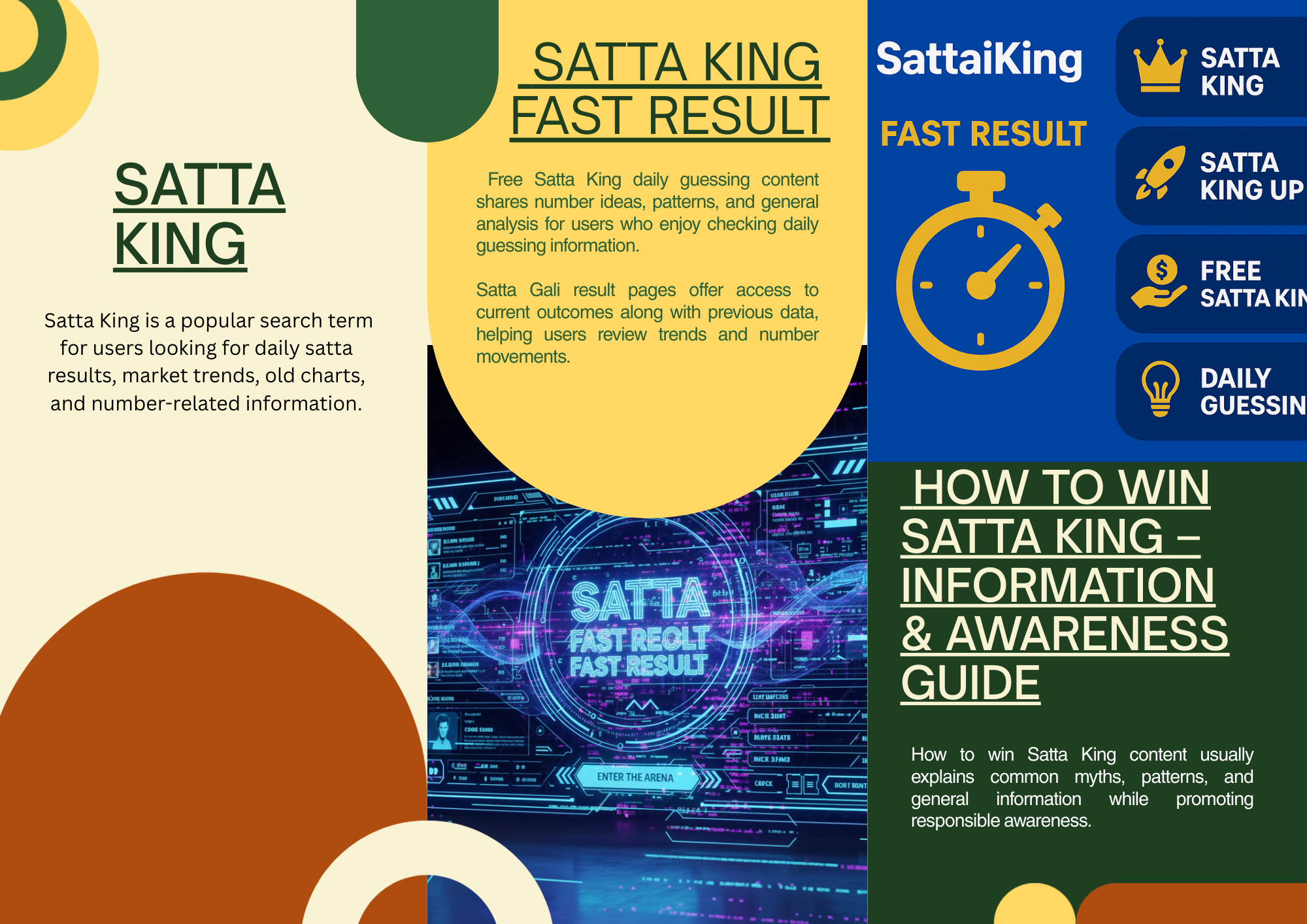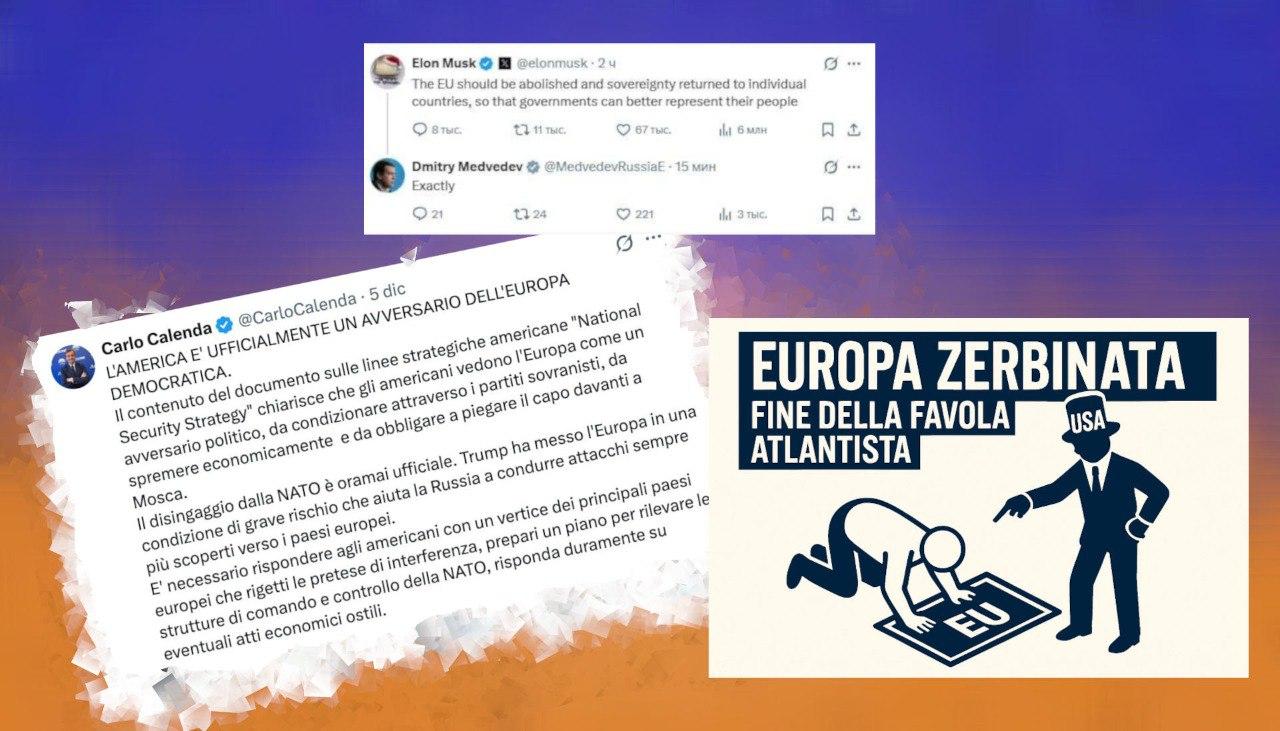𝗘𝗨𝗥𝗢𝗣𝗔 𝗭𝗘𝗥𝗕𝗜𝗡𝗔𝗧𝗔: 𝗙𝗜𝗡𝗘 𝗗𝗘𝗟𝗟𝗔 𝗙𝗔𝗩𝗢𝗟𝗔 𝗔𝗧𝗟𝗔𝗡𝗧𝗜𝗦𝗧𝗔.
Di Pino Cabras
[PRIMA PARTE]
La scena è tragica e comica insieme: i guerrapiattisti No Pax, quelli che fino a ieri ci spiegavano con tutto il sussiego possibile che “l’America ci protegge”, oggi piangono perché il “daddy” geopolitico ha pubblicato nero su bianco ciò che ogni adulto poteva già sapere: l’Europa per gli USA è solo un concorrente da manipolare, un vassallo da spremere, non certo un alleato da difendere.
E così, nel campo NAFO - quel curioso esercito di meme-warriors filo-NATO che passa le giornate su X o su Facebook a fare propaganda come se fosse un videogioco - si passa dal pianto greco alla disperazione isterica. C’è chi frigna perché “daddy ci ha lasciati soli”, chi delira perché “gli USA sono stati corrotti” (e riprende ogni leggenda nera su Trump “asset di Adolf Putin”) e chi continua a recitare la liturgia dell’Occidente faro di civiltà proprio mentre affoga nei suoi stessi dogmi. Ho visto perfino Gramellini e Floris dire che l’Europa non ha mai preteso di imporre una visione, perché invece include con rispetto. Interi continenti colonizzati prenderanno nota di questa strabiliante novità.
Poi ci sono i furbi che stanno già riposizionandosi: almeno loro non credono alle favole che raccontano.
Tutti gli altri, come ricorda Francesco Dall’Aglio, farebbero bene a tatuarsi addosso la semplice verità: gli USA non ci hanno mai voluto bene. Ci ha hanno semmai usati e continueranno a farlo finché l’Europa resterà legata a questa spiazzatissima infrastruttura di vecchie illusioni tecnocratiche e nuovi avventurismi militari del tutto velleitari.
“**** EU”, diceva Victoria Nuland nelle segrete stanze, proprio nei giorni in cui manipolava legioni di europeisti servili e illusi che assecondavano il suo “regime change” a Kiev. Non era una frase qualsiasi, ma il vero manuale operativo.
In questo cimitero di ingenuità ecco che arriva Calenda. Molti dei lettori, quando lo nomino, obiettano che non conta nulla e che quindi è meglio ignorarlo. Ma non si tratta di lui, è l’apparato che lo pompa e me lo fa apparire ovunque a contare davvero. E quello non si deve ignorare. Dunque andiamo avanti. Calenda, dicevo, con la serietà corrucciata di chi è arrivato tardi alla lezione e non ha capito l’argomento, annuncia che “bisogna rispondere agli americani” e che l’Europa deve “rigettare interferenze, preparare piani, rilevare strutture NATO”. Sembra uno di quei topolini della favola che proponevano di attaccare un campanello alla coda del gatto per accorgersi quando arrivava ma non sapevano spiegare come attaccare la campanella. Diciamo che Calenda dimentica un dettaglio grande quanto una base militare: l’Europa non ha più sovranità. Ha solo basi USA. Una caterva di basi. E non esiste un ufficietto europeo con un modulo per “rilevarle”.
È sublime: Calenda propone un “Yankee go home” senza avere una “home” da cui farli andare. Un piano di difesa europea senza autonomia industriale, energetica o strategica. La caricatura perfetta dell’europeismo moralista che ha svenduto tutto in nome dei “valori”.
I No Pax e i guerrapiattisti oggi soffrono il contraccolpo della loro stessa propaganda.
Per anni hanno urlato: “liberiamoci dalla dipendenza russa!” (sostituendo un rapporto stabile che era di mutua convenienza ed era il contrario di una minaccia con una dipendenza totale dagli USA, pagata tre volte e senza contropartite).
Poi dicevano “difendiamo l’Europa dagli autoritari!” (mentre consegnavano l’Europa a decisioni prese a Washington, nel Pentagono e nelle sale operative NATO, mentre dicevano che i crimini di Bibi il g3N0cida erano un buon “lavoro sporco” fatto nel nostro interesse). Poi urlavano “l’autonomia strategica!” (mentre firmavano l’atto di morte dell’autonomia energetica, industriale e diplomatica).
[SECONDA PARTE]
Il risultato è un’Europa che non decide nulla, non influenza nulla, non guida nulla. Semplicemente subisce e non ha nessuna traiettoria tecnologica in atto per risollevarsi. Questa è la tragedia: i No Pax hanno militarizzato l’immaginario, ma disarmato l’economia del continente. Più parlavano di competitività e altre parole vacue, più ci facevano arretrare in ogni statistica, fino al colpo di grazia delle sanzioni, l’auto-sabotaggio perfetto.
E qui tornano utili le tesi che ha esibito Francesco Forciniti, da scolpire sul frontone dell’UE:
• doveva darci forza → ci ha resi irrilevanti,
• doveva difendere il benessere → ha prodotto impoverimento,
• doveva garantire pace → prepara riarmo e leva,
• doveva creare coesione → ha generato fratture e rancori,
• doveva essere democratica → è diventata l’anticamera ottusa di un’oligarchia lobbistica,
• doveva renderci competitivi → ha costruito la stagnazione come regime.
Il re è nudo, si usa dire. Ma qui è peggio. È un re morto, circondato solo da cortigiani che litigano sulle decorazioni del feretro.
Calenda vuole opporsi agli USA? Wow, vastissimo programma, bello. Ma con cosa? Con quale sovranità? Con quali strutture? Con quali élite che per trent’anni hanno considerato l’obbedienza a Washington l’unica forma di politica estera possibile? Dove li trova gli euro-entusiasti dopo la desertificazione ultratrentennale della forza economica dell’Italia, ad esempio? L’Europa non può rispondere agli americani perché non esiste più come soggetto politico. Esiste come appendice tecnico–militare di un alleato che la considera zavorra.
I No Pax e i guerrapiattisti possono continuare a urlare, a piangere e a giocare alla geopolitica su X e sui giornali illeggibili che vendono sempre meno. Ma la realtà ormai è chiara: gli USA fanno i loro interessi. E noi abbiamo dimenticato come si fa a difendere i nostri.
Pazienza se Calenda dice sciocchezze e Musk, pur con tutti i suoi conflitti di interesse, dice su questo la cosa giusta. Pazienza se Dmitry Medvedev dice anche lui il giusto. Una via d’uscita esiste e non passa da questa UE ormai prossima all’implosione.
Per salvarsi serve una separazione lucida e ordinata che restituisca agli Stati europei ciò che hanno ceduto: sovranità politica, autonomia economica, libertà energetica e monetaria.
La direzione non è Washington, che ci vuole subalterni, ma il mondo che cresce: i BRICS+, dove cooperazione e sviluppo non richiedono abiure di indipendenza.
Il futuro è multipolare. Ma per entrarci dobbiamo prima liberarci da questa architettura europea che sta affondando. Uscirne non è un tabù, ma una questione di sopravvivenza.
[FINE]
𝗘𝗨𝗥𝗢𝗣𝗔 𝗭𝗘𝗥𝗕𝗜𝗡𝗔𝗧𝗔: 𝗙𝗜𝗡𝗘 𝗗𝗘𝗟𝗟𝗔 𝗙𝗔𝗩𝗢𝗟𝗔 𝗔𝗧𝗟𝗔𝗡𝗧𝗜𝗦𝗧𝗔.
Di Pino Cabras
[PRIMA PARTE]
La scena è tragica e comica insieme: i guerrapiattisti No Pax, quelli che fino a ieri ci spiegavano con tutto il sussiego possibile che “l’America ci protegge”, oggi piangono perché il “daddy” geopolitico ha pubblicato nero su bianco ciò che ogni adulto poteva già sapere: l’Europa per gli USA è solo un concorrente da manipolare, un vassallo da spremere, non certo un alleato da difendere.
E così, nel campo NAFO - quel curioso esercito di meme-warriors filo-NATO che passa le giornate su X o su Facebook a fare propaganda come se fosse un videogioco - si passa dal pianto greco alla disperazione isterica. C’è chi frigna perché “daddy ci ha lasciati soli”, chi delira perché “gli USA sono stati corrotti” (e riprende ogni leggenda nera su Trump “asset di Adolf Putin”) e chi continua a recitare la liturgia dell’Occidente faro di civiltà proprio mentre affoga nei suoi stessi dogmi. Ho visto perfino Gramellini e Floris dire che l’Europa non ha mai preteso di imporre una visione, perché invece include con rispetto. Interi continenti colonizzati prenderanno nota di questa strabiliante novità.
Poi ci sono i furbi che stanno già riposizionandosi: almeno loro non credono alle favole che raccontano.
Tutti gli altri, come ricorda Francesco Dall’Aglio, farebbero bene a tatuarsi addosso la semplice verità: gli USA non ci hanno mai voluto bene. Ci ha hanno semmai usati e continueranno a farlo finché l’Europa resterà legata a questa spiazzatissima infrastruttura di vecchie illusioni tecnocratiche e nuovi avventurismi militari del tutto velleitari.
“Fuck EU”, diceva Victoria Nuland nelle segrete stanze, proprio nei giorni in cui manipolava legioni di europeisti servili e illusi che assecondavano il suo “regime change” a Kiev. Non era una frase qualsiasi, ma il vero manuale operativo.
In questo cimitero di ingenuità ecco che arriva Calenda. Molti dei lettori, quando lo nomino, obiettano che non conta nulla e che quindi è meglio ignorarlo. Ma non si tratta di lui, è l’apparato che lo pompa e me lo fa apparire ovunque a contare davvero. E quello non si deve ignorare. Dunque andiamo avanti. Calenda, dicevo, con la serietà corrucciata di chi è arrivato tardi alla lezione e non ha capito l’argomento, annuncia che “bisogna rispondere agli americani” e che l’Europa deve “rigettare interferenze, preparare piani, rilevare strutture NATO”. Sembra uno di quei topolini della favola che proponevano di attaccare un campanello alla coda del gatto per accorgersi quando arrivava ma non sapevano spiegare come attaccare la campanella. Diciamo che Calenda dimentica un dettaglio grande quanto una base militare: l’Europa non ha più sovranità. Ha solo basi USA. Una caterva di basi. E non esiste un ufficietto europeo con un modulo per “rilevarle”.
È sublime: Calenda propone un “Yankee go home” senza avere una “home” da cui farli andare. Un piano di difesa europea senza autonomia industriale, energetica o strategica. La caricatura perfetta dell’europeismo moralista che ha svenduto tutto in nome dei “valori”.
I No Pax e i guerrapiattisti oggi soffrono il contraccolpo della loro stessa propaganda.
Per anni hanno urlato: “liberiamoci dalla dipendenza russa!” (sostituendo un rapporto stabile che era di mutua convenienza ed era il contrario di una minaccia con una dipendenza totale dagli USA, pagata tre volte e senza contropartite).
Poi dicevano “difendiamo l’Europa dagli autoritari!” (mentre consegnavano l’Europa a decisioni prese a Washington, nel Pentagono e nelle sale operative NATO, mentre dicevano che i crimini di Bibi il g3N0cida erano un buon “lavoro sporco” fatto nel nostro interesse). Poi urlavano “l’autonomia strategica!” (mentre firmavano l’atto di morte dell’autonomia energetica, industriale e diplomatica).
[SECONDA PARTE]
Il risultato è un’Europa che non decide nulla, non influenza nulla, non guida nulla. Semplicemente subisce e non ha nessuna traiettoria tecnologica in atto per risollevarsi. Questa è la tragedia: i No Pax hanno militarizzato l’immaginario, ma disarmato l’economia del continente. Più parlavano di competitività e altre parole vacue, più ci facevano arretrare in ogni statistica, fino al colpo di grazia delle sanzioni, l’auto-sabotaggio perfetto.
E qui tornano utili le tesi che ha esibito Francesco Forciniti, da scolpire sul frontone dell’UE:
• doveva darci forza → ci ha resi irrilevanti,
• doveva difendere il benessere → ha prodotto impoverimento,
• doveva garantire pace → prepara riarmo e leva,
• doveva creare coesione → ha generato fratture e rancori,
• doveva essere democratica → è diventata l’anticamera ottusa di un’oligarchia lobbistica,
• doveva renderci competitivi → ha costruito la stagnazione come regime.
Il re è nudo, si usa dire. Ma qui è peggio. È un re morto, circondato solo da cortigiani che litigano sulle decorazioni del feretro.
Calenda vuole opporsi agli USA? Wow, vastissimo programma, bello. Ma con cosa? Con quale sovranità? Con quali strutture? Con quali élite che per trent’anni hanno considerato l’obbedienza a Washington l’unica forma di politica estera possibile? Dove li trova gli euro-entusiasti dopo la desertificazione ultratrentennale della forza economica dell’Italia, ad esempio? L’Europa non può rispondere agli americani perché non esiste più come soggetto politico. Esiste come appendice tecnico–militare di un alleato che la considera zavorra.
I No Pax e i guerrapiattisti possono continuare a urlare, a piangere e a giocare alla geopolitica su X e sui giornali illeggibili che vendono sempre meno. Ma la realtà ormai è chiara: gli USA fanno i loro interessi. E noi abbiamo dimenticato come si fa a difendere i nostri.
Pazienza se Calenda dice sciocchezze e Musk, pur con tutti i suoi conflitti di interesse, dice su questo la cosa giusta. Pazienza se Dmitry Medvedev dice anche lui il giusto. Una via d’uscita esiste e non passa da questa UE ormai prossima all’implosione.
Per salvarsi serve una separazione lucida e ordinata che restituisca agli Stati europei ciò che hanno ceduto: sovranità politica, autonomia economica, libertà energetica e monetaria.
La direzione non è Washington, che ci vuole subalterni, ma il mondo che cresce: i BRICS+, dove cooperazione e sviluppo non richiedono abiure di indipendenza.
Il futuro è multipolare. Ma per entrarci dobbiamo prima liberarci da questa architettura europea che sta affondando. Uscirne non è un tabù, ma una questione di sopravvivenza.
[FINE]














